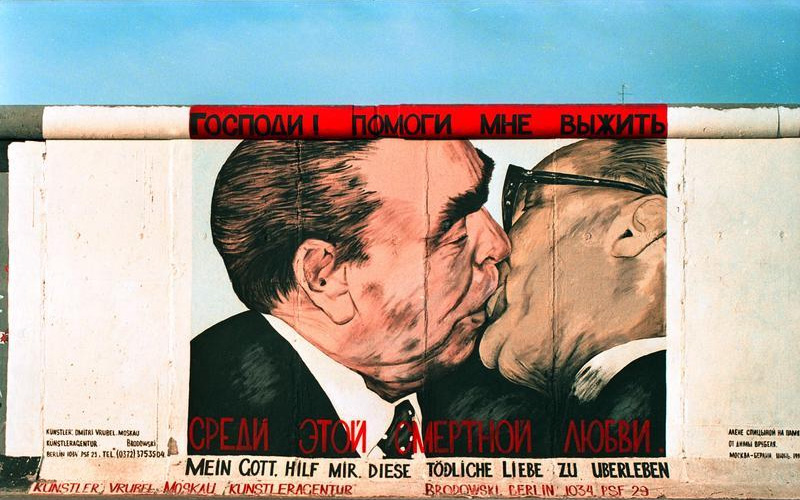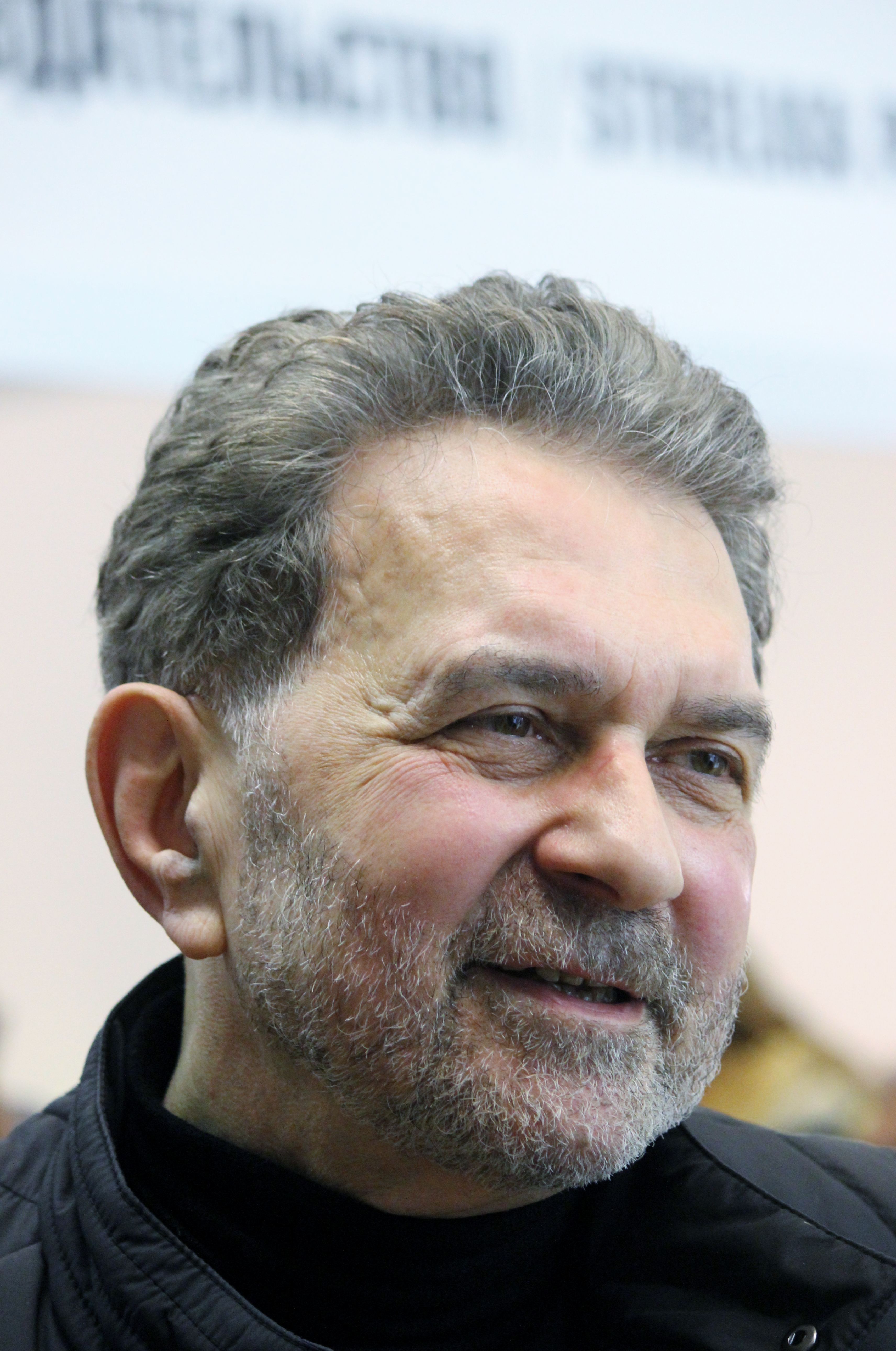|
Sots Art
Often referred to as “Soviet Pop Art”, Sots Art or soc art (russian: Соц-арт, short for Socialist Art) originated in the Soviet Union in the early 1970s as a reaction against the official aesthetic doctrine of the state— socialist realism, which was marked by reverential depictions of workers, peasants living happily in their communes, and, during Stalinism, a young, fit Joseph Stalin. Vitaly Komar and Alexander Melamid are credited with the invention of the term "Sots Art"; in an analogy with the Western pop art movement, which incorporated the kitchy elements of the Western mass culture, sots art capitalized on the imagery of the Socialist mass culture. According to Arthur Danto, Sots Art's attack on official styles is similar in intent to American pop art and German capitalist realism.Arthur Coleman Danto, ''After the End of Art: contemporary art and the pale of history'', Princeton University Press, 1997, p126. Artists * Grisha Bruskin * Eric Bulatov * Vi ... [...More Info...] [...Related Items...] OR: [Wikipedia] [Google] [Baidu] |
Bundesarchiv B 145 Bild-F088809-0038, Berlin, East Side Gallery
The German Federal Archives or Bundesarchiv (BArch) (german: Bundesarchiv) are the National Archives of Germany. They were established at the current location in Koblenz in 1952. They are subordinated to the Federal Commissioner for Culture and the Media (Claudia Roth since 2021) under the German Chancellery, and before 1998, to the Federal Ministry of the Interior (Germany), Federal Ministry of the Interior. On 6 December 2008, the Archives donated 100,000 photos to the public, by making them accessible via Wikimedia Commons. History The federal archive for institutions and authorities in Germany, the first precursor to the present-day Federal Archives, was established in Potsdam, Brandenburg in 1919, a later date than in other European countries. This national archive documented German government dating from the founding of the North German Confederation in 1867. It also included material from the older German Confederation and the Imperial Chamber Court. The oldest documents i ... [...More Info...] [...Related Items...] OR: [Wikipedia] [Google] [Baidu] |
Capitalist Realism
The term "capitalist realism" has been used, particularly in Germany, to describe commodity-based art, from Pop Art in the 1950s and 1960s to the commodity art of the 1980s and 1990s. When used in this way, it is a play on the term "socialist realism". Alternatively, it has been used to describe the ideological-aesthetic aspect of contemporary corporate capitalism in the West. In art Although attested earlier, the phrase "capitalist realism" was first used in the title of the 1963 art exhibition in Düsseldorf, ''Demonstration for Capitalist Realism'', which featured the work of Gerhard Richter, Sigmar Polke, Wolf Vostell, and Konrad Lueg. The exhibition's participants focused upon depictions of Germany's growing consumer culture and media-saturated society with strategies, in part, influenced by those of their American Pop counterparts. The recent rise in Pop Art in German culture was coupled by a fascination with America, which served as a stimulation for the piece. They we ... [...More Info...] [...Related Items...] OR: [Wikipedia] [Google] [Baidu] |
Distributed Art Publishers
D.A.P./Distributed Art Publishers, Inc. is an American company that distributes and publishes books on art, photography, design, and visual culture. ARTBOOK website, March 10, 2011. Founding D.A.P./Distributed Art Publishers was founded in New York in 1990 (and incorporated in 1992) by Sharon Helgason Gallagher (B.A., Yale University; M.A. Columbia University), who had previously worked as rights director and managing editor at . It started out as a partnership between Gallagher and Daniel Power, with an office supplied by |
Minnesota University Press
The University of Minnesota, formally the University of Minnesota, Twin Cities, (UMN Twin Cities, the U of M, or Minnesota) is a public land-grant research university in the Twin Cities of Minneapolis and Saint Paul, Minnesota, United States. The Twin Cities campus comprises locations in Minneapolis and Falcon Heights, a suburb of St. Paul, approximately apart. The Twin Cities campus is the oldest and largest in the University of Minnesota system and has the ninth-largest main campus student body in the United States, with 52,376 students at the start of the 2021–22 academic year. It is the flagship institution of the University of Minnesota System, and is organized into 19 colleges, schools, and other major academic units. The Minnesota Territorial Legislature drafted a charter for the U of M as a territorial university in 1851, seven years before Minnesota became a state. Today, the university is classified among "R1: Doctoral Universities – Very high research activity ... [...More Info...] [...Related Items...] OR: [Wikipedia] [Google] [Baidu] |
Leonid Sokov
Leonid Sokov (russian: Леони́д Петро́вич Со́ков, October 11, 1941, Tver region – April 4, 2018 in Copake, New York, United States) was a Russian nonconformist artist and sculptor. He primarily lived and worked in New York City. Life and work Sokov was born in Mikhalevo in the Tver region, Russia in 1941 and graduated from the Stroganov Institute now called the Moscow School of Art and Industry, in 1969. He emigrated to the United States in 1980. His compositions are in the Pop style, adapted to Socialist Realism through the use of ideology as an object of consumption. He is closely related to the Sots art movement and he has worked with others in that genre including Dmitry Prigov, Alexander Kosolapov, and Rostislav Lebedev. In 2001 he represented Russia at the Venice Biennale. He participated in the 2004 Gwangju Biennale in Gwangju, South Korea. In 2012, the Moscow Museum of Modern Art (MMoMA) honored the artist's 70th birthday with a major retr ... [...More Info...] [...Related Items...] OR: [Wikipedia] [Google] [Baidu] |
Dmitri Prigov
Dmitri Aleksandrovich Prigov (russian: Дми́трий Алекса́ндрович При́гов, 5 November 1940 in Moscow – 16 July 2007 in MoscowDmitri Prigov, leader of conceptualist school, dies at age 66 news agency AP via ''International Herald Tribune'', 16 July 2007) was a Russian writer and artist. Prigov was a during the era of the and was briefly sent to a |
Igor Novikov (painter)
Igor Alekseevich Novikov, also Igor Alexejewitsch Nowikow, (Russian language, Russian): Новиков, Игорь Алексеевич (born 2 January 1961 in, Moldavian Soviet Socialist Republic) is a Swiss- Russians, Russian painter, Art theory, art theorist, philosopher, Drawing, a bbrght representative of sotsarta, member of the Russian Academy of Arts. Art Igor Novikov belongs to one of the areas of postmodern art, Sots Art. He belongs to the generation of Moscowian Soviet Nonconformist Art painters who have been shaped by the demise of the Soviet Union. Igor Novikov creates his own style of drawing, his philosophy in painting, his own direction – suggestisms. Life Igor Novikov was born in a family of a famous artist academician Alexey Novikov (Russian language, Russian: Новиков Алексей Иванович) member of the Imperial Academy of Arts. He belongs to the generation of Moscowian Soviet Nonconformist Art painters who have been shaped by the demise of t ... [...More Info...] [...Related Items...] OR: [Wikipedia] [Google] [Baidu] |
Alexander Kosolapov
Alexander Kosolapov (russian: Александр Семёнович Косолапов) (born January 1, 1943, in Moscow, Russia) is a Russian-American sculptor and painter. He immigrated to the United States in 1975 and has since lived and worked in New York City. Biography In the late 1950s Kosolapov attended the school of the Surikov Moscow Art Institute. Amongst his classmates were Leonid Sokov and Alexander Yulikov. After his emigration, the artist played a critical role in assisting in the gathering of materials and clandestine distribution of the unofficial Soviet art magazine ''A-YA'', edited by fellow Russian emigre Igor Chelkovski. Since his Soviet-era canvases (one of which was displayed in Times Square in 1982), he has produced more modern works, including Mickey Mouse sharing a conversation with Jesus, Tatlin's Tower leaning away from the clutches of a skeleton, and a Mercedes sporting an onion dome. Public collections * The State Russian Museum, St. Petersbur ... [...More Info...] [...Related Items...] OR: [Wikipedia] [Google] [Baidu] |
Eric Bulatov
Erik Bulatov (russian: Эрик Владимирович Булатов; born September 5, 1933 in Sverdlovsk) is a Russian artist, who was raised in Moscow. His father was a communist party official who died in World War II at Pskov, and his mother fled Poland at age 15 in support of the Russian Revolution. Bulatov's works are in the major public and private collections in Europe, Russia and United States. In 2008 Bulatov became an honorary member of the Russian Academy of Arts. Early life Education Bulatov studied painting at the Surikov Art Institute in Moscow, graduating in 1958. He began working as a children’s book illustrator with friend and collaborator, Oleg Vassiliev for which he won numerous awards. Both artists were immensely influenced by Robert Falk and Vladimir Favorsky two artists of the early-twentieth century Russian avant-garde. Sretensky Boulevard Group In the 1960s Bulatov formed the Sretensky Boulevard Group with Ilya Kabakov, Edik Steinberg, ... [...More Info...] [...Related Items...] OR: [Wikipedia] [Google] [Baidu] |
Grisha Bruskin
Grisha Bruskin (born October 21, 1945) is a Russian artist known as a painter, sculptor, and printmaker. He was born in Moscow. Between 1963 and 1968, he studied at the Moscow Textile Institute (Art Department). In 1969, he became a member of the Artists' Union of the USSR. Bruskin's participation in the famous Sotheby's auction in Moscow (1988) brought him worldwide fame, when his piece, "Fundamental Lexicon" was sold for a record price. He relocated to New York in 1988. In 1999, at the invitation of the German government and as a representative of Russia, Bruskin created a monumental triptych, "Life Above All" for the reconstructed Reichstag in Berlin. In 2001 he published a memoir-style book, "Past Imperfect." In 2012 he received the Kandinsky Prize in the "Project of the Year" category, for his project, "H-Hour." Bruskin lives and works in New York and Moscow. He is one of the best-known and most successful contemporary artists of Russian origins. Exhibitions * 2012, ' ... [...More Info...] [...Related Items...] OR: [Wikipedia] [Google] [Baidu] |
Arthur Danto
Arthur Coleman Danto (January 1, 1924 – October 25, 2013) was an American art critic, philosopher, and professor at Columbia University. He was best known for having been a long-time art critic for ''The Nation'' and for his work in philosophical aesthetics and philosophy of history, though he contributed significantly to a number of fields, including the philosophy of action. His interests included thought, feeling, philosophy of art, theories of representation, philosophical psychology, Hegel's aesthetics, and the philosophers Friedrich Nietzsche and Jean-Paul Sartre. Life and career Danto was born in Ann Arbor, Michigan, January 1, 1924, and grew up in Detroit. He was raised in a Reform Jewish home. After spending two years in the Army, Danto studied art and history at Wayne University (now Wayne State University). While an undergraduate he intended to become an artist, and began making prints in the Expressionist style in 1947 (these are now great rarities). He then pursue ... [...More Info...] [...Related Items...] OR: [Wikipedia] [Google] [Baidu] |
Stalin Monument In The Hague
Joseph Vissarionovich Stalin (born Ioseb Besarionis dze Jughashvili; – 5 March 1953) was a Georgian revolutionary and Soviet political leader who led the Soviet Union from 1924 until his death in 1953. He held power as General Secretary of the Communist Party of the Soviet Union (1922–1952) and Chairman of the Council of Ministers of the Soviet Union (1941–1953). Initially governing the country as part of a collective leadership, he consolidated power to become a dictator by the 1930s. Ideologically adhering to the Leninist interpretation of Marxism, he formalised these ideas as Marxism–Leninism, while his own policies are called Stalinism. Born to a poor family in Gori in the Russian Empire (now Georgia), Stalin attended the Tbilisi Spiritual Seminary before joining the Marxist Russian Social Democratic Labour Party. He edited the party's newspaper, ''Pravda'', and raised funds for Vladimir Lenin's Bolshevik faction via robberies, kidnappings and protection ... [...More Info...] [...Related Items...] OR: [Wikipedia] [Google] [Baidu] |



